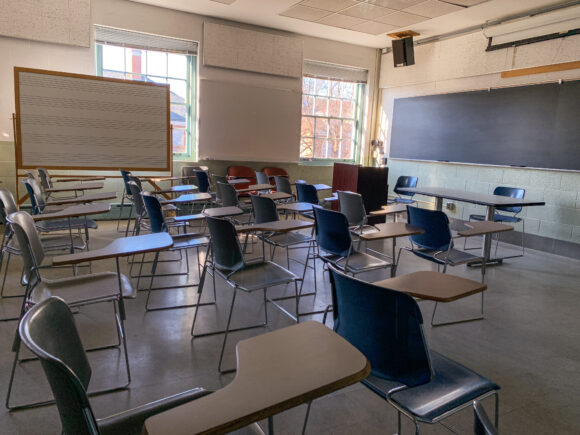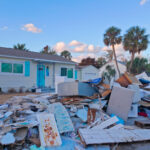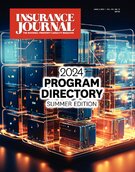Discrimination, active assailants and an aging infrastructure — educational institutions today face tough liability and property risks that were uncommon in the not-too-distant past. Pair those with longtime risks like sexual assault and molestation, and the liability insurance market for schools has become a challenging sphere to navigate.
“For K-12 schools, the hardest market, and the market that continues to be hard, is liability,” said Matthew Gowan, senior vice president of Alliant Public Entity. “And that’s almost entirely driven by nuclear verdicts, settlement inflation and SAM [sexual abuse and molestation] claims.”
Settlement inflation has rocked the insurance landscape in recent years. Schools are not immune. Gowan never saw a claim over $25 million in the first 15 years of his career. Now, that price tag is not uncommon.
“It’s the opposite of immune,” Gowan said of school liability insurance. “It’s leading the way, I would say. Just do a quick Google search. It’s not uncommon to see these large verdicts now. And verdicts coming out of brand-new perils.”
In October, a Southern California school district was hit with a $135 million verdict in a molestation case. Gowan said most schools carry “maybe $50 million in coverage,” however. A few months later, that same school district reached a $27 million settlement in a bullying case.
In California, examples of new liability insurance perils include Assembly Bill 218, which eliminated the statute for commencing an action for recovery of damages suffered because of childhood sexual assault. Other states have passed similar bills.
Additionally, California’s Senate Bill 553 requires virtually all employers to develop, implement and maintain an “effective” written workplace violence prevention plan (WVPP), train employees, and create and maintain extensive records regarding workplace violence.
Bullying lawsuits, while uncommon a decade ago, have increased in both frequency and cost. The number of carriers offering liability coverage for K-12 schools has reduced worldwide, Gowan said, adding that “most brokers that work in K-12 schools spend most of our time on liability insurance.”
Million-Plus Dollar Legal Cases Trending Up
According to Alera Group’s 2024 Property and Casualty Market Outlook, the main concerns for the education sector remain liability exposures stemming from employment practices and sexual misconduct.
The report from Alera Group highlighted a study conducted by United Educators, a risk retention group that provides liability insurance to its members. That study found that there were 71 major damage awards and settlements of at least $1 million that affected K-12 schools and higher education institutions in 2023. There were 69 damage awards and settlements of at least $1 million in 2022 and 37 in 2021.
Losses of $1 million or more totaled $651 million in 2023.
Behind sexual misconduct, discrimination tied for the second-most common publicly reported settlement or award listed in this year’s United Educators’ large loss report.
“Insurers will allocate their capacity to institutions with demonstrated track records for managing risk effectively,” Alera Group’s 2024 Market Outlook said. “When insurers make loss control recommendations, most will expect clients to comply.”
Changing Availability
Greg Wigfield, president and founder of Leesburg, Virginia-based National Church Group Insurance, an agency that works with hundreds of private schools across the United States, echoed Gowan’s concerns, pointing to potential sexual abuse, abuse allegations and school violence and security as primary liability concerns.
Sexual abuse and molestation concerns are not new, but their impacts have changed coverage options available today, Wigfield said. Sexual abuse coverage “used to be a giveaway for companies that were in the school business,” according to Wigfield, adding that there was previously little charge for it. That was before a surge that Wigfield said made SAM the No. 1 insurance liability issue in the country around the year 2000.
“There are still companies that won’t even say whether or not they have the coverage,” Wigfield said. “It’s really interesting … they just make it unclear whether or not you have coverage for sexual abuse and different things around that. The companies that are serious about schools and school insurance have the coverage.”
These companies also have supplemental applications to discern what schools are doing to prevent SAM issues from occurring, Wigfield said. If schools don’t meet those standards, “you will get greatly reduced coverage or no coverage whatsoever,” he said. “So, that’s been a big thing.”
Student Protests and Liability Coverage
Students across the country have protested the Israel-Hamas war in recent months, and while property risks are a concern, liability issues can arise, too.
“With any large gathering, whether it be a concert, parade or protest, there is significant liability risk,” explained Tory Brownyard, president of Brownyard Group and program manager for their group’s security and investigative programs. “The first and most serious risks are bodily injury claims or assault claims. Bodily injury or assault claims can come into play when one attendee attacks another and the client alleges that the security force did not do enough to protect the injured person. Alternatively, the client or individual could allege that the security officer assaulted an attendee.”
When it comes to protests, Wigfield believes agencies must focus on risk management. Agencies must ask schools questions like, “If a protest happens on your campus, what are you going to do,” he said, but overall, “I don’t think it’s a coverage issue.”
“Companies might make some changes,” he added. “But right now, that’s not on the table at all, I don’t think. I just think it’s a risk management program that needs to be in place. And that can really keep a lot of problems from showing up.”
Aging Infrastructure Risk
In addition to concerns on schools’ liability risks, Gowan pointed to property risks and concerns over aging infrastructure as a “significant issue” for schools.
Across the country, many schools were built in the 1960s and 1970s, he said, and this, combined with damages from recent weather events, has prompted underwriters to ask agencies more detailed questions when securing coverage. An aging school building can affect both property insurance coverage limits and the type of coverage offered, he said.
“Now they ask us, ‘How old is the roof?'” Gowan said. “‘What’s the composite of the roof? What’s the build quality?'”
He’s seen carriers attach higher deductibles to school roofs that are older than 15 years, or only offer actual cash value instead of replacement cost on certain older buildings.
Rural school districts used to be an easier risk to insure but as wildfire exposures have become more of a concern to underwriters that has changed.
“It’s completely flipped in the last few years,” he said. “Urban schools, where they don’t have the firestorm risk, [and], they’ve got fire departments close by, are sometimes easier to underwrite than rural schools,” he said. “The underwriters worldwide are focused on fire risk more than vandalism risk.”
Risk Management First
When it comes to school liability insurance, “prevention is key on these emerging trends,” Gowan said.
Wigfield added for those who want to be in the business of insuring schools, “you need to come at it from a risk management approach, not a sales approach,” he said. “You might sell a bunch,” he said, “but the company, and the agency are eventually going to get hurt because they just haven’t done the risk management pieces that make insurance work,” he said.
That means learning the market in detail.
“The school market is different than many other markets,” according to Wigfield. “Risk management is huge in so many things. … I think we’ve reached an age in this country where we can’t just go jump into a market and not know what in the world we’re doing.”
He continued: “And today, especially with the hard market the way it is, your underwriter had better be impressed, or you won’t make the sale. And the best way to impress an underwriter is to have a strong risk management program.”
Was this article valuable?
Here are more articles you may enjoy.



 Wildfire Losses Drop Chubb Q1 Net Income 38%, While Tariffs Create ‘Confusion’
Wildfire Losses Drop Chubb Q1 Net Income 38%, While Tariffs Create ‘Confusion’  Major Florida Grower to Build New Home Development After Ending Citrus Operations
Major Florida Grower to Build New Home Development After Ending Citrus Operations  State Farm Wins Dismissal of Class Action Over Xactimate Software
State Farm Wins Dismissal of Class Action Over Xactimate Software  More Floridians Moving Out Due to Housing, Insurance Costs, Cotality Report Says
More Floridians Moving Out Due to Housing, Insurance Costs, Cotality Report Says 


